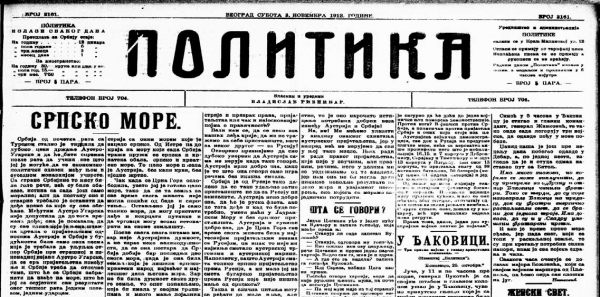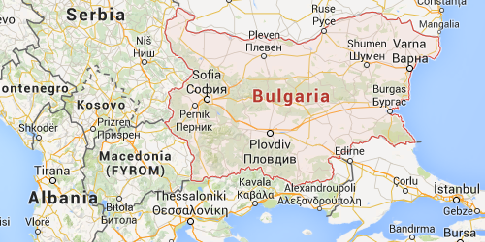By Davide Morisi and Ben Murray
If News Corp’s decision to spin-off Sky News – paving the way towards the complete acquisition of BSkyB – had been announced before the expert workshop held at the LSE on 2 March, the key questions of the debate would likely have remained the same. Whether or not the deal will be approved, the problem of defining and measuring media plurality is still extremely challenging. The question of how to define and measure media plurality is far from reaching consensus, especially between experts and policy makers.
In 2008, an independent study for the European Commission, led by Professor Peggy Valcke, on ‘Indicators for Media Pluralism in the Member States’ addressed this problem. Prof Valcke explained the project’s aim to monitor media pluralism in the member states and to develop a list of indicators on media pluralism. The underlying idea, as she put it, was that:
“…monitoring should ensure a much more substantive, evidence-driven debate compared with the past, able to pinpoint real concerns and lay to rest misplaced fears.”
The Media Pluralism Monitor (MPM) took into account several ‘risk domains’ – such as cultural, political and geographical pluralism – with the aim to address every dimension included within the concept of pluralism. In particular, the MPM was implemented with three main types of indicators – economic, socio-demographic and legal – reaching a total of 166 indicators. At present, however, the MPM has yet to be applied by the member states and the EU Commission is still waiting for the approval of Parliament for further consultation.
Additionally, Valcke provided an overview of the European framework, and underlined some relevant future trends in the field, such as:
- the demand for more sophisticated systems of measuring and measurement,
- the need for further research on the link between ownership and pluralism, and
- the growing importance of measuring the actual use of media.
Specifically, she explained how different countries, like Germany or Belgium, have developed different mechanisms of monitoring pluralism and sanctioning eventual legal violations.
Dr. Rachael Craufurd Smith also weighed in on the debate surrounding measurement. Dr. Smith tried to apply the tools used by the US Federal Communications Commission to the UK scenario. The Herfindahl-Hirschmann Index (HHI) is used by the Department of Justice and the Federal Trade Commission to measure the concentration effects of proposed mergers in local markets, a model the FCC designed as the Diversity Index in 2003. However, according to Craufurd Smith, the index proved to be a ‘failed attempt’ of assessing plurality, essentially due to its complete reliance on market tools.
Focusing on Ofcom’s report, Craufurd Smith also highlighted some controversial points. First, the threshold for blocking a merger should be reconsidered. In relation to the News Corp/BskyB case, she raised the question of how we can decide whether the key figure of 24% news provision provided by Ofcom – i.e. the fact that “the proposed acquisition would see News Corp consolidate its second place in terms of news consumption (rising from 14% to 24% including wholesale news provision)” – is sufficient to block the merger.
A second problem concerns the need to weight different media in terms of their influence to shape public opinion, while according to the Ofcom report, every media is considered equal. Furthermore, Craufurd Smith questioned whether media plurality can be measured considering news programmes alone, as Ofcom did, or whether we should adopt a broader perspective, taking into account different media genres.
Finally, the talk by Professor Martin Cave led the debate surrounding links between competition rules and pluralism. Cave argued that the application of competition law to media plurality has ‘huge limitations,’ and we therefore need to think about competition and plurality more broadly. Cave called for more empirical evidence and for more practical cases to be analysed, before changing the current framework and so we can allow a precedent to be established.
Many contributions by the participants also underlined the limits of competition law, which would not be able to address all the dimensions of media diversity. As some participants pointed out, this is particularly relevant in relation to cross-media ownership and the trend towards digital convergence, which is blurring the boundaries between traditional media and changing news consumption.
A last point of debate included the need to take into account the process of building the news agenda and the difference of power that each medium is able to exert in this process. While Ofcom’s approach assumes an equal role, for example, between TV and print media, this relation actually seems to be more complex, with TV journalists often relying on newspapers in the process of setting the agenda.
The workshop sparked stimulating discussion and was a tremendous success. Many thanks to everyone who participated and contributed.





Lorna Woods, one of our expert participants, draws attention to two stories which concern EU media policy.
The first case involves “Media experts and press freedom” in the EU. The article suggests that media experts call attention to the ways that press freedom has ” deteriorated badly in Hungary, Romania, Bulgaria, but also Italy and France, and [have also] called on the EU institutions to spearhead a wide-ranging ‘reconquest’ of basic rights across the European Union.” http://bit.ly/gqo2p5
The second case calls attention to the arrests of 7 journalists in Turkey and the drastic undermining of media freedom. http://bit.ly/gOm2xy
Lorna’s biographical information can be found here: http://www.city.ac.uk/law/about/our-staff/academic-staff/lorna-woods.html